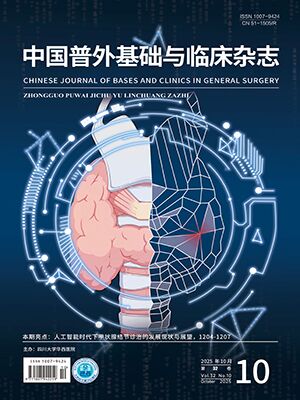| 1. |
Saber AA, Elgamal MH, Itawi EA, et al. Single incision laparoscopic sleeve gastrectomy (SILS): a novel technique. Obes Surg, 2008, 18(10): 1338-1342.
|
| 2. |
Moreno-Sanz C, Morandeira-Rivas A, Sedano-Vizcaino C, et al. Single-incision laparoscopic bariatric surgery: a systematic review. Surg Obes Relat Dis, 2015, 11(1): 248-257.
|
| 3. |
Haueter R, Schütz T, Raptis DA, et al. Meta-analysis of single-port versus conventional laparoscopic cholecystectomy comparing body image and cosmesis. Br J Surg, 2017, 104(9): 1141-1159.
|
| 4. |
杨珵璨, 于洋, 王文越, 等. 单孔腹腔镜胃袖状切除术疗效的初步研究. 腹部外科, 2022, 35(5): 344-349.
|
| 5. |
Lainas P, Derienne J, Dammaro C, et al. Single-port laparoscopic surgery for the treatment of severe obesity: review and perspectives. Obes Surg, 2020, 30(7): 2781-2790.
|
| 6. |
Sun SD, Wu PP, Zhou JF, et al. Comparison of single-incision and conventional laparoscopic sleeve gastrectomy for morbid obesity: a meta-analysis. Obes Surg, 2020, 30(6): 2186-2198.
|
| 7. |
Klassen AF, Cano SJ, Alderman A, et al. The BODY-Q: a patient-reported outcome instrument for weight loss and body contouring treatments. Plast Reconstr Surg Glob Open, 2016, 4(4): e679. doi: 10.1097/GOX.0000000000000665.
|
| 8. |
Carrière ME, Mokkink LB, Tyack Z, et al. Development of the patient scale of the patient and observer scar assessment scale (POSAS) 3.0: a qualitative study. Qual Life Res, 2023, 32(2): 583-592.
|
| 9. |
中国医师协会外科医师分会肥胖和代谢病外科专家工作组, 中国医师协会外科医师分会肥胖代谢外科综合管理专家工作组, 中国肥胖代谢外科研究协作组. 中国肥胖代谢外科数据库: 2023年度报告. 中华肥胖与代谢病电子杂志, 2024, 10(2): 73-83.
|
| 10. |
Golkar FC, Ross SB, Sperry S, et al. Patients’ perceptions of laparoendoscopic single-site surgery: the cosmetic effect. Am J Surg, 2012, 204(5): 751-761.
|
| 11. |
van der Laan L, Kuipers EAM, Timmerman JG, et al. Patient expectations of bariatric outcomes, baseline, and long-term evaluation. Obes Surg, 2025, 35(8): 3064-3074.
|
| 12. |
Voth C, Kapani N, Silveira CBD, et al. The impact of comorbidities and surgical approach in incisional hernia development after minimally invasive cholecystectomy: a systematic review and meta-analysis of multivariate regression-adjusted studies. Hernia, 2025, 29(1): 148. doi: 10.1007/s10029-025-03340-9.
|
| 13. |
Chen P, Jiao J, Xue H, et al. Exploration of umbilical hernia incidence and etiology in 753 cases of single-incision laparoscopic surgery: a retrospective analysis. BMC Surg, 2025, 25(1): 224. doi: 10.1186/s12893-025-02958-x.
|
| 14. |
Deerenberg EB, Henriksen NA, Antoniou GA, et al. Updated guideline for closure of abdominal wall incisions from the European and American Hernia Societies. Br J Surg, 2022, 109(12): 1239-1250.
|
| 15. |
Connell MB, Selvam R, Patel SV. Incidence of incisional hernias following single-incision versus traditional laparoscopic surgery: a meta-analysis. Hernia, 2019, 23(1): 91-100.
|
| 16. |
Nguyen A, Huynh C, Goh A, et al. A systematic review of the management of postoperative scars with silicone gel-based products in randomized controlled trials. Dermatol Online J, 2023, 29(4). doi: 10.5070/D329461860.
|
| 17. |
Stratis C, Haider SA, Oleru O, et al. Paper tape may improve scar aesthetics and prevent wound closure complications. Plast Aesthet Nurs (Phila), 2024, 44(1): 59-69.
|




